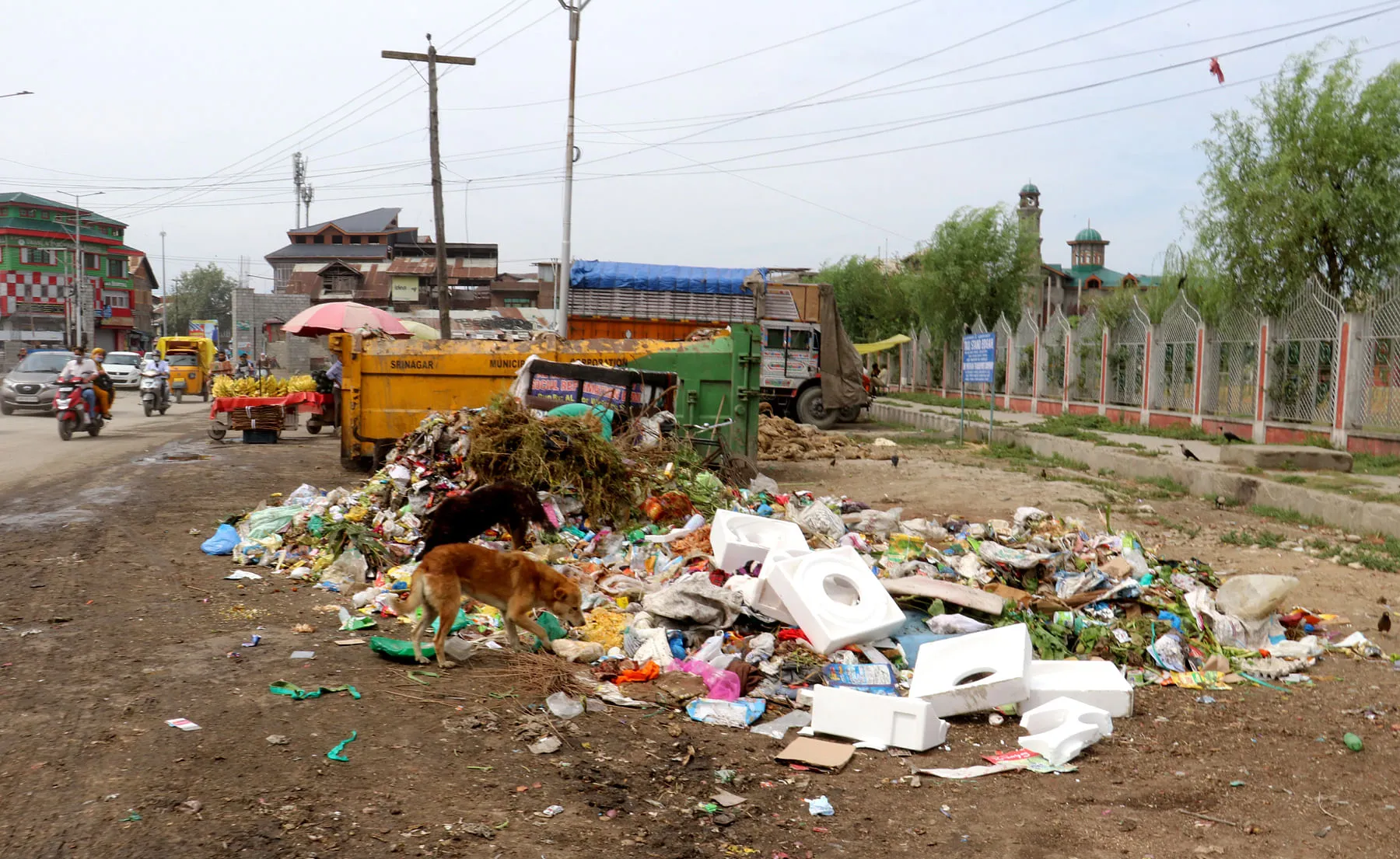Srinagar City is famous for its natural gardens, waterfronts, and houseboats. Unfortunately in the government’s latest “Ease of living index”, Srinagar ranked at the bottom. There are many factors responsible for Srinagar’s poor performance; mismanagement of garbage is the most important one. Srinagar City produces 400 metric tons of waste each day; the problem is not the waste but poor management of waste. After collecting waste from house’s hundreds of SMC sweepers empty their trolleys at open temporary sheds, mostly placed at Srinagar’s busy roads. Piles of garbage are formed and these piles of garbage stay there for hours until finally transported to landfill site. This method of collection and transportation of waste seems a much-uncivilized thing to do, but in this part of the world, it is a normal. 2020, taught humans true value of clean environment and sanitation, but in Kashmir even during the pandemic, this piling of garbage on streets was practiced. During the rush morning hours, when streets are jammed with traffic, collected waste is thrown on the streets. In summers it gets almost impossible to breathe due to decomposing organic waste, decomposing organic wastes are also microbial growth, which makes people and animals living around these areas vulnerable to disease.
These open dumping sites also pose a different kind of challenge, these sites act as feeding and breeding grounds for stray dogs. It is among the major problems faced by the residents of the city. I have personally seen and survived far too many near misses between my car and these stray dogs. There are many accounts of people who got attacked by the stray dogs in these areas, especially at night. These incidents can sometimes lead to serious injuries, even death. These garbage sites are a good source of food for the dogs. It is like a giant feast offer to them.
When it comes to miss-management of waste, people are equally responsible. In Srinagar City, people seem to lack basic sense of waste disposal. People prefer to throw waste in all sorts of places – parks, rivers, ponds, lakes, and on roads. Segregation of waste is largely not practiced. Organic waste and plastic waste are stored together and most of the times plastic waste finds its way into rivers and lakes. It is not hard to notice plastic wrappers, bottles, floating in Srinagar’s water bodies. Which are facing serious deterioration. The downtown area of the Srinagar city is worst hit by the garbage crisis. The “Sher-e-Khas” may look inviting in portrait shots but in reality the old city is devastated by garbage crisis.
Walking along the river Jhelum one can easily notice the river embankments covered with plastic bags, and all other kinds of waste, all the way from Habba Kadal to Safa Kadal. It seems like garbage has rained down from sky and accumulated along the embankments of the river Jhelum. Deteriorating lakes, overflowing dustbins, streets covered with filth and dogs feeding on them; the city is facing a serious garbage crisis!
Solid waste management is not a rocket science; it is a simple way of segregating and reusing waste. The SMC needs to replace old steel dust bins with the colour coded ones, which can properly store and segregated waste. Educating people about the importance of waste management, storing, and disposing of waste is also important. Plastic waste can be reused and recycled easily; organic waste can also be used to make compost and manures. Hence, solving the waste management problem. We also need to learn from European nations like Sweden, which produces 4.4 million tons of waste per year and only 1% of that goes to landfills the rest is either recycled or used to produce electricity. If we could only implement 5% of it our problems will be solved. Kashmir is well known for its clean environment and clean water, but that reality is changing thanks to our uncivilized ways of waste management.






